Subscribe now and get the latest podcast releases delivered straight to your inbox.
8 Things You Should Never, Ever Do in a Sales Video
.jpg?width=50&height=50&name=1920px_Myriah_Anderson%20(2).jpg)
Dec 13, 2018
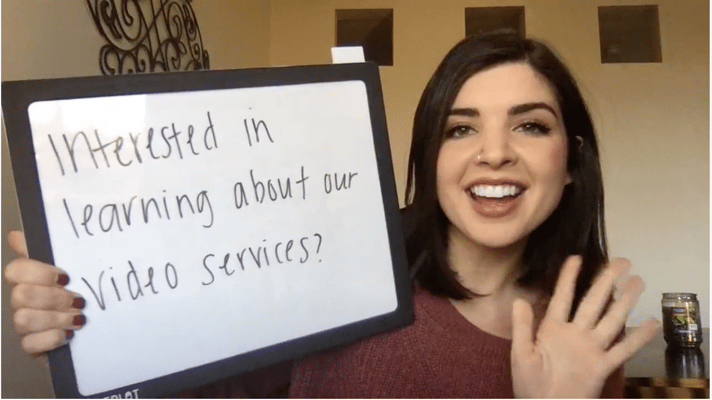
Over the past year, I’ve immersed myself in everything video for sales to learn what works, what doesn’t, and how we can continue to get creative in our efforts.
Since incorporating video we’ve seen sales cycles shorten, stalled or lost opportunities resurface, and an increase in engagement with leads overall.
In fact, it’s been shown that using video in sales emails can boost open-to-reply rates by 8x!
With this in mind, I’ve thoroughly researched the work of others, but I’ve also learned a ton on what I should and shouldn’t be doing, from my own trial and error.
From this experience, and reviewing other team members sales videos, I’ve identified eight traps that people most frequently fall into that could hurt their efforts.
I point these out not to discourage you, or make you feel like you're not meant to create sales video, but to help you avoid them and make you a sales video rockstar.
Let’s dive into what they are, how you can avoid them, and how you can in the moment follow best practice.
8 Things You Shouldn’t Do In A Sales Video
1. Make The Message All About You
One of the first things I learned when entering into a sales role was to start the conversation focused on your prospect’s needs and wants, rather than what your company offers.
This can play a powerful role in building trust and long-term relationships and your sales videos can play a big part in this.
This, unfortunately, is where most sales reps go the wrong way.
You might think that leading with how great and powerful your product or service is, is the only way that’ll you’ll get someone’s attention, but really the best way is to show off your expertise is by providing prospects with something valuable and educational.
Cater to their pain point and needs. Inquire about what they would find helpful and take the relationship from there. This is content marketing 101.
You’ll find that people will be more receptive when you make your videos about wanting to help them, rather than just talking about themselves.
Curious what those different approaches look like in a sales video?
Check it out.
What does making it all about you look like?
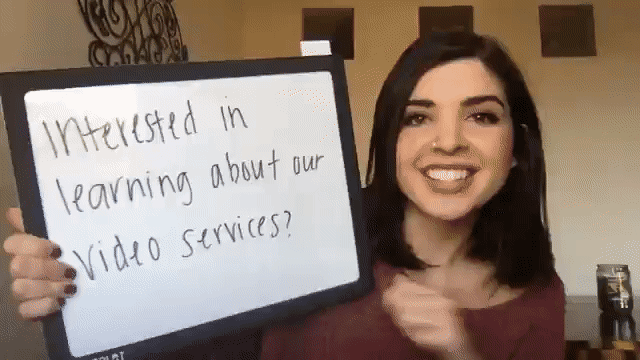
What’s wrong with this video?
I don’t ask the prospect any questions, I don’t make the conversation about how I can potentially help them - I jump right into the services our company with little to zero focus on wanting to find out what their specific needs are to then determine how to potentially help them.
What you should be doing:
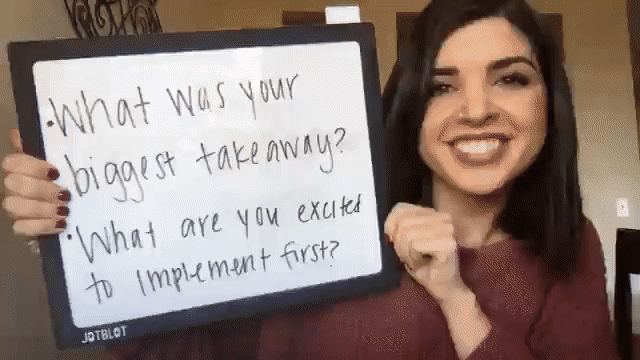
What’s right with this video?
This approach poses questions to get the contact to not only engage, but to learn more about their needs. I also offer resources and time rather than trying to sell our services right away. This shows I can and want to provide value first off when building a relationship with someone who doesn’t really know me and that I don’t know well.
2. Go For The Hard Sell
The quickest way to turn someone off, especially early on in prospecting or in the sales process is to go in for the hard sell.
People get turned off immediately, similar to how they’d react if you made your video all about yourself. In fact, a study was done that showed 71% of buyers/readers say they were turned off by content that seemed like a sales pitch.
Your prospects want to feel more in control of their decision to buy versus being pressured into it.
With this in mind, the worst thing you can do with a sales video is to be all about why the prospect should be interested in your services.
Instead, be helpful.
You can share blog content, guides, or educational videos that help answer questions that usually come up even before they enter the sales process.
First, understand the needs of your prospect, and get to know them.
A great way to tee up these type of sales videos is to use something like a playlist and include a 1:1 intro video explaining why you are sharing the videos and how it will help address any questions they might have.
1:1 videos are fantastic to use throughout your sales process to build trust, but produced videos can also help support your efforts from an educational standpoint and speed along the sales process.
3. Include Zero Calls-to-Action / Or Include Too Many
One of the biggest no-no’s you can make when creating sales videos is to forget to include a call-to-action (CTA).
Think about it, you get someone all jazzed up about what you have to say and then you provide zero direction in what they should do next.
You may think your prospect would automatically know the next step if they were moved by your video, but that isn’t always the case.
You want to make it as easy as possible to take the next logical step in the sales process.
What CTA should you use?
It all comes down to where your prospect is in the sales process.
If you’re prospecting and reaching out to them for the first time, you might want to consider providing a piece of content to help show your expertise and build trust.
Whereas if you’re managing an inbound lead that you’re trying to book an appointment with, you should consider using your meeting link as a call-to-action.
Including a call-to-action can easily be done using a tool like Vidyard.
With Vidyard, you can add a CTA at any point in your video and easily link up a landing page or meeting link. That way you can track whether people are actually interacting with your videos and interested in taking the next step.
Now, don’t get too excited at the thought of all the CTAs you could use. There is such thing as going overboard.
If you provide too many CTAs, you could ultimately overwhelm a prospect and lead to inaction, so be strategic
4. Use Terrible Body Language
Another thing to be hyper-aware of in your sales videos is your body language.
I don’t say this to make you anxious about how you look on video - because I can tell you that the little things you’re concerned about in appearance aren’t the things I’m about to mention.
The biggest struggle I see people have on video is their inability to show excitement and truly engage through their body language.
The moment your viewer feels you’re bored, or not excited about getting a chance to talk to them is the moment they’ll fall off.
You might be thinking, “well Myriah, I’m just not a super bubbly energetic person.”
Not a problem! You don’t have to be, but I am recommending you make sure you’re showing as much personality as possible to engage with your prospect through video.
I don’t believe people fail to show excitement because they aren’t able to. I believe it’s because no one initially feels comfortable on video.
It’s something you have to do over and over again to get used to, and then, it’ll be easier to loosen up and show more authentic emotion.
The following tips and areas of focus will help make sure your body language in your sales videos is on point:
Lean In
Slouching and leaning back can give the impression that you’re not interested whereas if you lean in a little, it gives off non-verbal engaging vibes.
Slouching example:
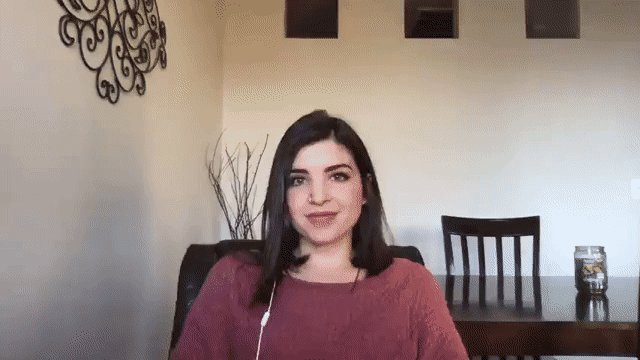
Leaning in example:
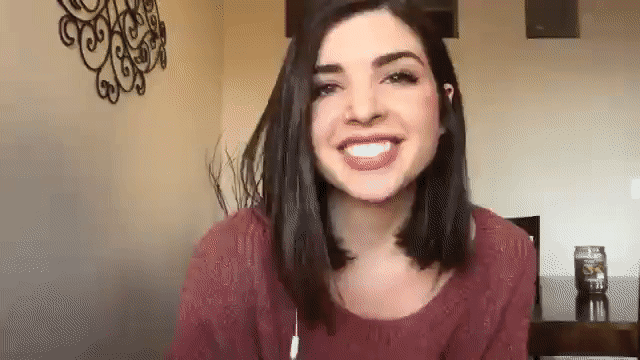
Just comparing the two, you can automatically get a more positive impression and vibe from someone who is leaning in vs. someone who is casually slouching and leaning back in their chair.
Another pro-tip: keeps your arms uncrossed and try naturally using your hands when you talk.
Smile
I’m not suggesting that you be overly smiley, but you do want to seem happy and interested in recording the video for them.
If you aren’t showing happiness, it could come across that you’re just going through the motions of doing sales outreach and not that interested in building a relationship.
Look Into The Camera
This is the video equivalent of looking someone in the eye.
Think of when you are talking to someone in person who looks away often - you might not feel like they’re paying attention to you or being truthful. The same goes with video.
Be aware of your desktop notifications, it’s easy to get distracted and look away if you have email notifications or chats coming through when you’re trying to record videos. If you’re blocking out part of your day to record videos consider snoozing notifications so you can stay 100% focused.
Speak Clearly
This isn’t “body” language persay, but pay attention to your speaking voice. Make sure that you aren’t mumbling or talking too fast. You want to make sure that the person watching the video can clearly understand exactly what you’re saying.
Overall, show excitement. You need to appear interested in getting to know your prospect, and you want your prospect to feel special.
Think about the first impression you have of someone you’re meeting for the first time.
Are you going to be more drawn to someone who is excited to get to know you or the person who is just going through the motions of starting a relationship?
5. Disregard Video Length
Another thing you have to be conscious of is your video length.
When you’re first starting out, it’s easy to ramble on, use filler language, and make your messages longer than they need to be. To avoid this, take a look back at your videos and ask yourself the following:
-
Could I have gotten to the point quicker?
-
Did every point I make offer value?
-
Did I repeat myself?
-
Were there parts that weren’t even really pertinent to them?
-
What are my typical fluff and filler words?
Another great way to figure out if your videos are too long in length is to check out the viewer duration. If people are dropping off before the end of your video, then it might be too long.
If they are dropping off at a certain point, maybe you aren’t getting to the valuable points quick enough.
From my personal experience, I’ve seen that the minute mark and under for initial sales videos is the sweet spot, anything significantly over I tend to see more drop-off.
With that being said, it could be different for your audience and the message you’re portraying. Test it out to see what works best for you. HubSpot offers some guidelines to experiment with here.
For videos where you are recording a follow-up to a sales call or reviewing an SOW those can be longer, but use your best judgement.
The best thing to remember is - did I get straight to the point?
6. Record Videos In An Unprofessional Space
When recording a sales video, you should be aware of your surroundings.
What does an unprofessional space look like?
-
Terrible Lighting
-
Cluttered/ Messy Background
-
Distracting Background Noise
That doesn’t mean that you need to be in a fancy office setting; It just means that you need to keep those potentially distracting items at a minimum.
I’ve been asked by prospects and teammates if recording video from their home is unprofessional. It is absolutely not.
In fact, a huge percentage of today’s workforce works from home and it’s something that most people are quite aware of.
There is a difference, however, between having a well-lit clean dining room behind you, and a bedroom with dirty laundry strewn about.
Showing a professional work environment, shows that you take your job seriously; and if you take your job seriously, you’re more likely to take your prospect’s goals more seriously as well.
7. Have a Script
None of your videos for sales should be scripted. Video is your opportunity to connect on a more personable human level. Do you usually have a script when you talk to people face to face?
When getting started, you might naturally think it’s best to have a script to make sure you don’t forget important points, but following a script can come off inauthentic.
People want to know that you know your stuff and if you’re reading from a script, they’re going to think you don’t really know what you’re talking about and are just reading.
Show-off your confidence and expertise by having a natural dialogue via video.
(And I promise, people will know if it’s scripted and you’re reading off notes so don’t try to get sneaky.)
Instead of a full script, write down just the main points that you want to cover. Review them in your head a couple times and then record.
Even consider practicing what you want to say out loud, so you figure out how you want to best approach your message.
Based on experience, I can say after you do this exercise a few times, you’ll find you no longer need it.
You’ll start to feel comfortable on video and with your approach in messaging.
8. Have Zero Personalization
I don’t have to tell you video is powerful in prospecting -- I’m sure you know that -- but it doesn’t mean that you can just record one video and use it over and over for starting sales conversations.
If you think casting a huge net with one video is going to work, you’re all wrong.
You have to put in a little time, and record personalized videos, at least initially.
Address them by name; mention something specific you talked about or even a little joke.
This shows them that you’re giving them undivided attention and that they’re not just another number.
This is not to say that you should always use personalized video. There are times when that just isn’t possible. So, get strategic about your approach.
Think about times when you might need to use more canned videos and when you need that extra, personal touch.
For canned videos, consider finding a way to make it feel personal.
Is it a lead who just filled out a form on your website who you need to send an automated canned email video response to? In this scenario, you can use a canned video where you call out the fact that they filled out a specific form on your website or that you just called them. Think of how you can be specific in why you’re following-up, all without saying their name.
Example:
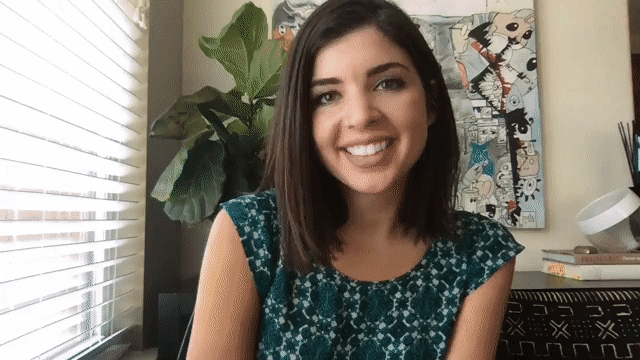
Also, make sure you record the video on your webcam as they feel much more authentic. If it’s higher quality and produced your prospect will know it’s canned.
Focusing on all the things you should include in video is great, but you can’t forget about the things you should avoid that might be working against you.
Some of these seven “no-no’s” aren’t things that can be shaken off automatically, but the more aware you become of them, and the more frequently you revisit your efforts and analyze what is working and what isn’t, the quicker you’ll get to finding success in your sales video efforts.


Order Your Copy of Marcus Sheridan's New Book — Endless Customers!